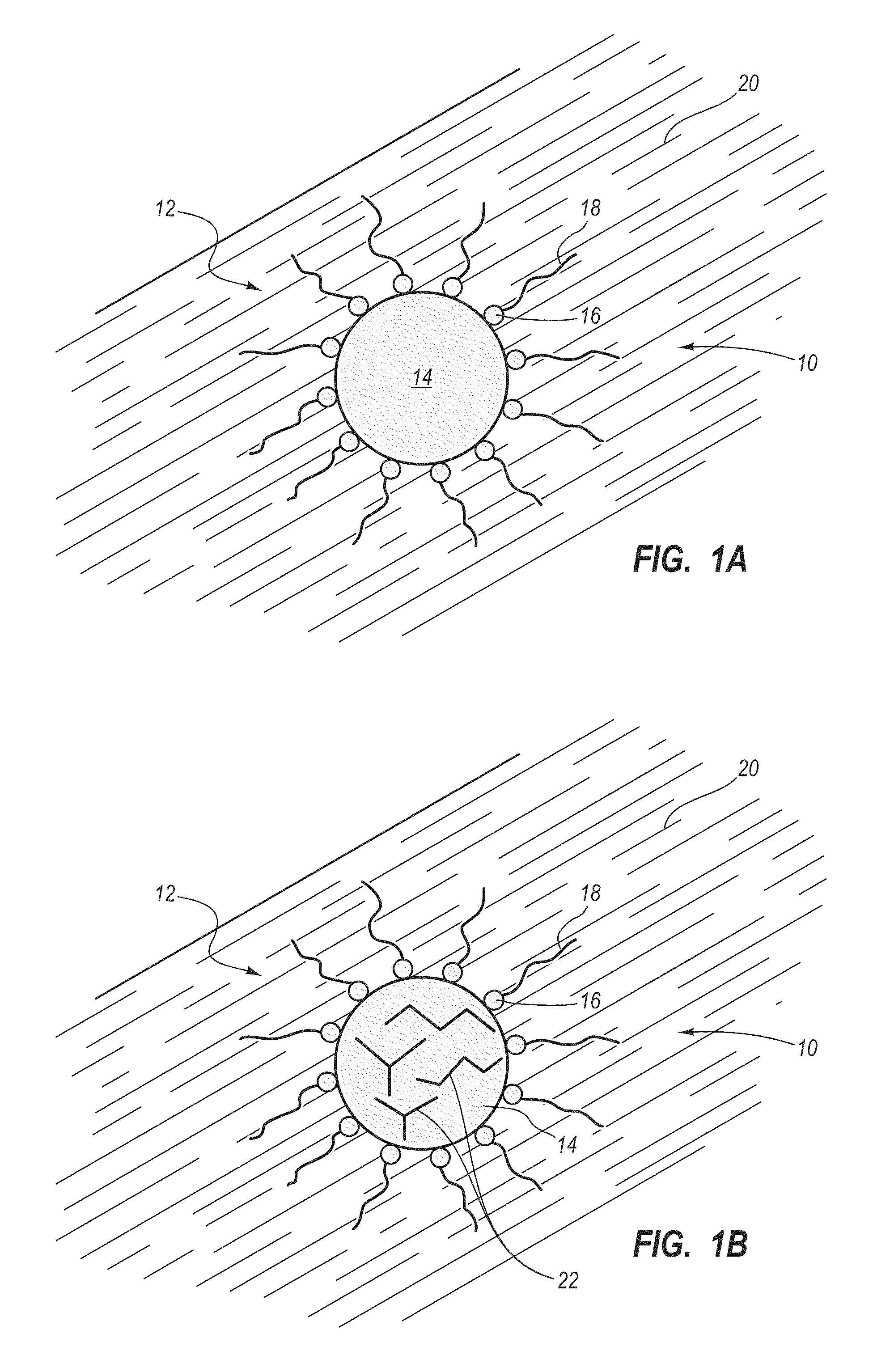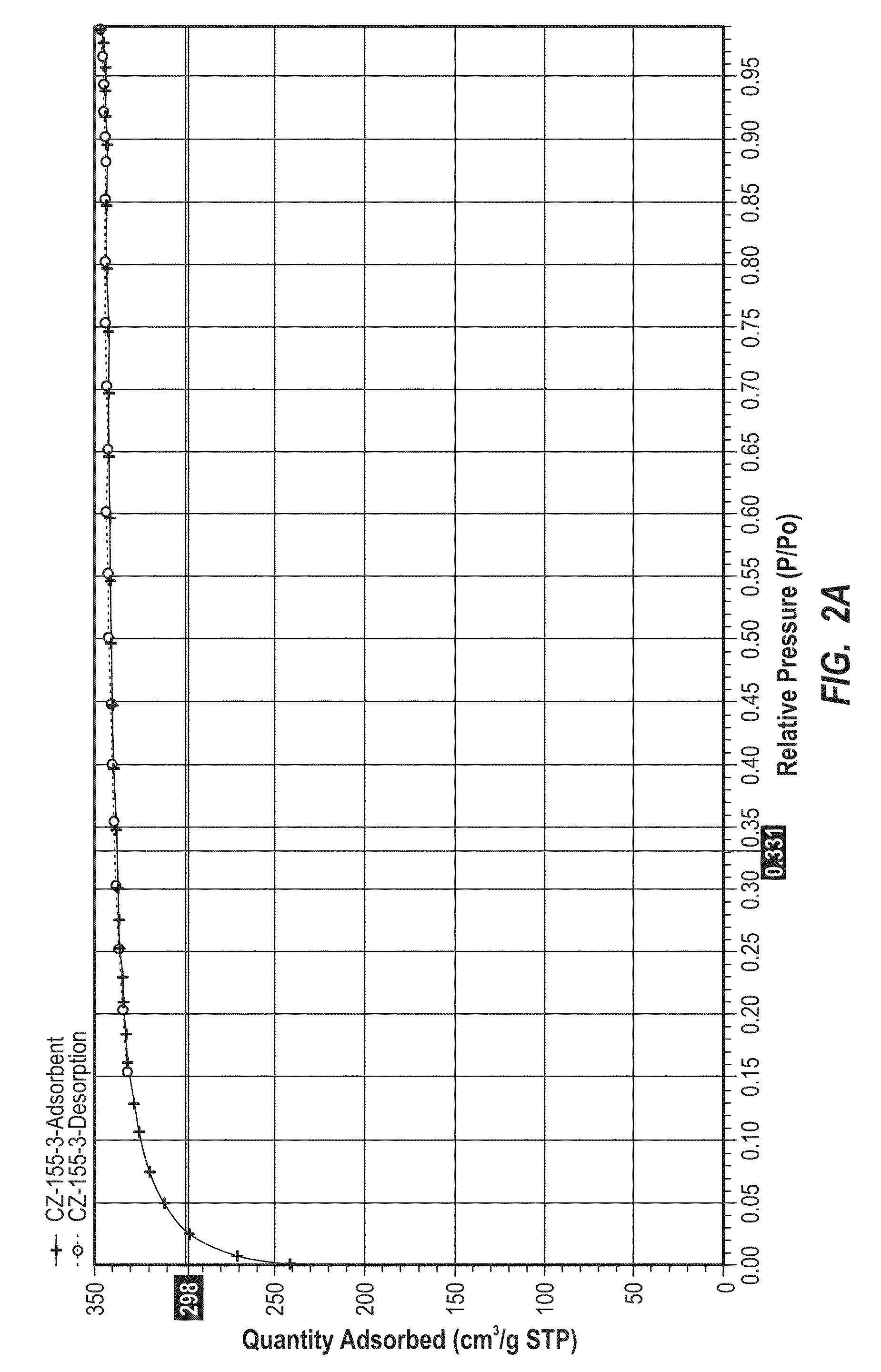Preparation of a carbon nanomaterial using a reverse microemulsion
- Summary
- Abstract
- Description
- Claims
- Application Information
AI Technical Summary
Benefits of technology
Problems solved by technology
Method used
Image
Examples
example 1
[0065]Example 1 describes the preparation of a powdered, amorphous carbon nanomaterial.
[0066]100 ml of cyclohexane, 20 ml of triton x-100 and 10 ml of deionized H2O were mixed in one 500 ml three-neck round bottom flask with vigorous stirring to form clear micelles. A resorcinol (24 g) in formaldehyde (35.2 g) solution was slowly added followed by the addition of NH4OH (18 ml). The resulting creamy-like slurry was cured at 77° C. for 3 hours under vigorous stirring. The solid intermediate amorphous carbon nanomaterial was collected by filtration and dried in an oven overnight. The resulting light-brown solid was carbonized at 1050° C. under N2 flow for 5 hours.
example 2
[0067]Example 2 describes the preparation of a powdered, amorphous carbon nanomaterial.
[0068]500 ml of cyclohexane, 100 ml of triton x-100 and 50 ml of deionized H2O were mixed in one 2000 ml three-neck round bottom flask with vigorous stirring to form clear micelles. A resorcinol (120 g) in formaldehyde (176 g) solution was slowly added followed by the addition of NH4OH (90 ml). The resulting creamy-like slurry was cured at 77° C. for 3 hours under vigorous stirring. The solid intermediate amorphous carbon nanomaterial was collected by filtration and dried in an oven overnight. The resulting light-brown solid was carbonized at 650° C. under N2 flow for 5 hours.
example 3
[0069]Example 3 describes the preparation of a powdered, amorphous carbon nanomaterial.
[0070]500 ml of cyclohexane, 100 ml of triton x-100 and 50 ml of deionized H2O were mixed in one 2000 ml three-neck round bottom flask with vigorous stirring to form clear micelles. A resorcinol (120 g) in formaldehyde (176 g) solution was slowly added followed by the addition of NH4OH (90 ml). The resulting creamy-like slurry was cured at 77° C. for 3 hours under vigorous stirring. The solid intermediate amorphous carbon nanomaterial was collected by filtration and dried in an oven overnight. The resulting light-brown solid was carbonized at 850° C. under N2 flow for 5 hours.
PUM
 Login to View More
Login to View More Abstract
Description
Claims
Application Information
 Login to View More
Login to View More - R&D
- Intellectual Property
- Life Sciences
- Materials
- Tech Scout
- Unparalleled Data Quality
- Higher Quality Content
- 60% Fewer Hallucinations
Browse by: Latest US Patents, China's latest patents, Technical Efficacy Thesaurus, Application Domain, Technology Topic, Popular Technical Reports.
© 2025 PatSnap. All rights reserved.Legal|Privacy policy|Modern Slavery Act Transparency Statement|Sitemap|About US| Contact US: help@patsnap.com



